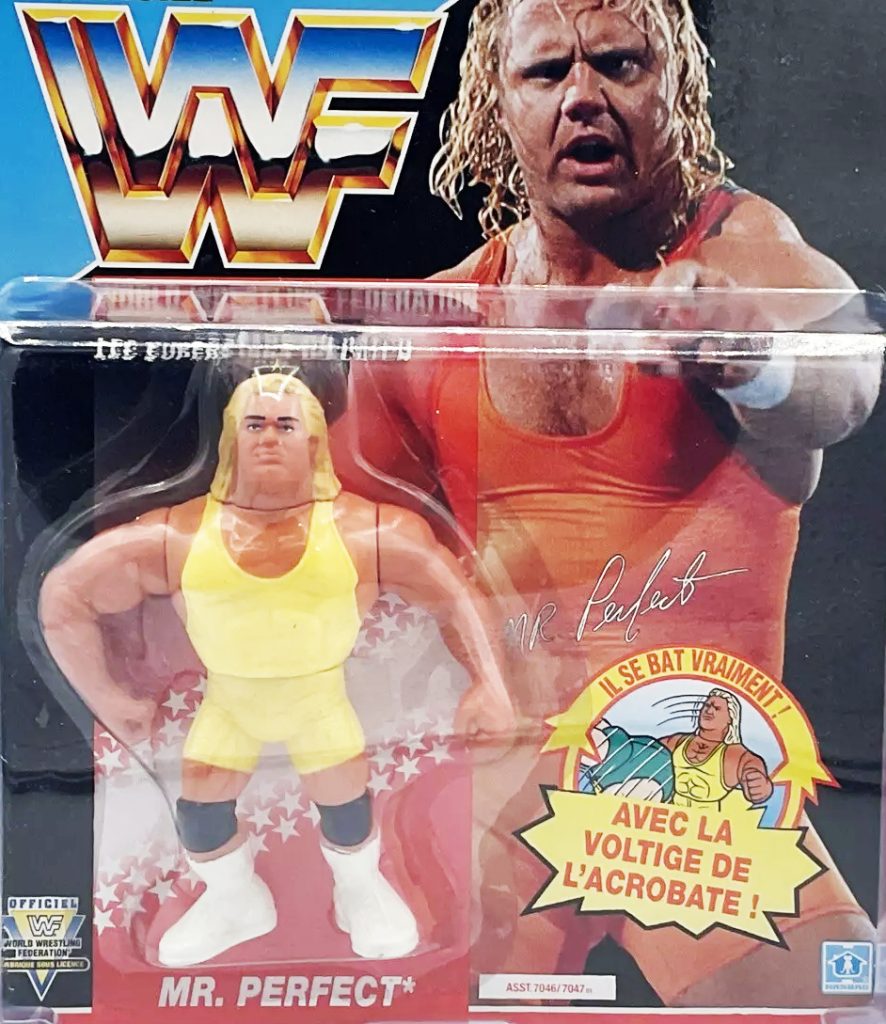Pro wrestling is built on spectacle—and the toys followed suit. From the rubber titans of the ’80s to today’s hyper-posable Elites, WWE figures bottled the ring’s drama so fans could run their own cards at home.
The Early Days: LJN’s Wrestling Superstars (1984–1989)
LJN kicked things off with big, solid rubber figures (~8″). Minimal articulation, maximum presence: Hulk Hogan, Andre the Giant, Macho Man, Ultimate Warrior. Add-on rings let kids book main events on the carpet. While more display than play, they nailed the era’s larger-than-life vibe.
Hasbro Takes Over: Action-Feature Mayhem (1990–1994)
Hasbro shrunk the scale (~4.5″) and cranked up playability. Each figure carried a signature action—press-and-slam, springy punches, flying elbows—that mirrored TV finishers. Bright, cartoony sculpts captured early ’90s WWF energy across stars like Hogan, Warrior, Bret Hart, Shawn Michaels, The Undertaker, and Ric Flair.
Jakks Pacific: The Attitude Era & Beyond (1996–2009)
As TV got edgier, Jakks dialed up realism. Bone Crunching Action introduced tactile joint “crack” feedback; later lines emphasized better proportions and accessories. With Stone Cold, The Rock, Triple H, Mankind, etc., the roster exploded—chairs, ladders, cages, and full rings let fans recreate ladder matches and cage blow-offs.
Mattel Era: Elite, Basics & Ultimates (2010–present)
Mattel modernized the line with accurate scans, detailed gear, and robust articulation. The Elite series is the collector sweet spot (poseable, accessory-rich), Basics cover kid-friendly price points, and Ultimate Edition adds swappable heads/hands and premium range of motion. Legends and current stars sit side by side—Bruno to Roman.
Why These Figures Worked
- Character-first design: sculpts and gear sell the persona—entrance coats, belts, face paint, hair, tattoos.
- Play patterns: ropes, rings, and “moves” reward posing and staging—book a card, run feuds, blow off in a cage.
- Continuity: decades of rosters let fans build cross-era dream matches.
Collector Notes
- LJN: watch for paint rubs and “tacky” rubber; avoid heat/sun; stands help with shelf dives.
- Hasbro: test spring/lever actions; cracked torsos and missing accessories (belts, stairs, flags) ding value.
- Jakks: loose joints and broken pegs are common—ask for close-up joint photos; beware yellowing plastics.
- Mattel Elite/Ultimate: verify swappable parts, soft goods, and title belts; counterfeit checks—face print quality, packaging fonts, accessory molds.
- Rings & cages: confirm turnbuckles, ropes, posts, and clips; replacement ropes tighten shelf displays.
- Storage: bag tiny accessories; keep rubber/vinyl pieces separate to prevent sticking or staining.
Timeline Snapshot
- 1984–1989: LJN Wrestling Superstars define the genre (big rubber, display-forward).
- 1990–1994: Hasbro scales down, adds action features—fast, fun ring play.
- 1996–2009: Jakks spans New Generation → Attitude → Ruthless Aggression with increasing realism.
- 2010–present: Mattel’s Elite/Ultimate set the collector standard; retro tributes keep every era alive.
Legacy
WWE figures are a constant in the hobby because they mirror the show’s heart: character, storytelling, and outrageous set pieces. For media-linked toy lines with similar “play the show at home” energy, see The Real Ghostbusters, TMNT, and crossover-era curios like Dick Tracy (1990).
